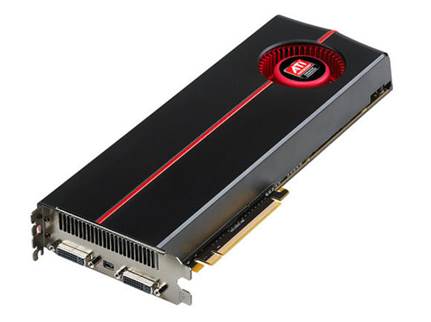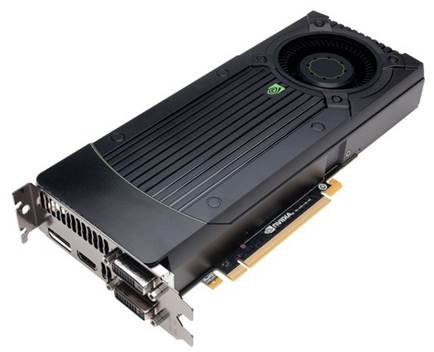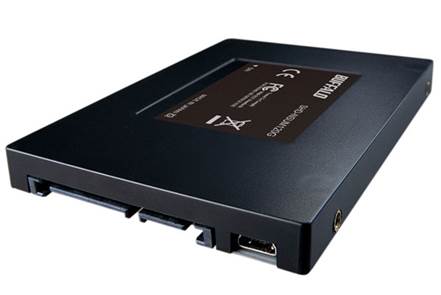Expect version 2.0 of the same
hardware instead of brand-new designs
Nvidia To Unleash Kepler 2.0
2012 was a great year for Nvidia’s Kepler
architecture and we’ll see second-generation Kepler cards in 2013. though
specifics are unknown. Nvidia, not surprisingly, isn’t talking. We do know one
thing: The GTX 680 is not the full-powered implementation of Kepler technology,
as it features a graphics chip dubbed CR104, which in Nvidia-speak means
something akin to ‘midrange part.” If you recall, the GTX 560 Fermi board from
2011 featured a chip named GF1O4, and it wasn’t until the GTX 580 was released
that we saw a GF11O chip. So when the GTX 680 launched this year with 6K104, we
naturally had to ask. “Where’s the GK110?” Nvidia answered that question when
it pulled the wraps off its Kepler GK11O chip in May at the CPU Technology
conference, revealing a massive CPU that has almost double everything compared
to the GK1O4 chip found in the GTX 680. Designed for the Tesla K20 that will be
used in the world of CPU computing, GK11O boasts twice as many transistors as
the GTX 680, sporting 7.1 billion compared to the GK1O4’s 3.5 billion; it also
has 2.880 CUDA cores within 15 SMX units compared to the GTX 68OEs 1,536 CUDA
cores in eight SMX units. Its six memory controllers give it a 384-bit memory
bus compared to the GK1O4’s 256-bit interface. To be clear: The next-gen GTX
780 will not feature a full-strength GK11O it would be totally uncharacteristic
of Nvidia to double performance in the next generation, particularly when the
competition doesn’t warrant it but there’s Lots of headroom there to offer
healthy gains in performance, nonetheless.

2012
was a great year for Nvidia’s Kepler architecture and we’ll see
second-generation Kepler cards in 2013.
With the GTX 680 already holding the title
as fastest single-CPU card for gaming right now, it’s possible Nvidia wilt hold
off on over-clocking any of its 6-series cards and just move onto its
second-generation 7-series Kepler boards. It’s an approach similar to Intel’s tick-tock
strategy release new architecture, then refine it for the second generation. If
you were waiting for all-new hardware from Nvidia in 2013, don’t hold your
breath. The current plans are to run with Kepler for 2013 until Nvidia’s
next-generation 2Onm hardware, dubbed Maxwell, appears in 2014.

The
current plans are to run with Kepler for 2013 until Nvidia’s next-generation
2Onm hardware, dubbed Maxwell, appears in 2014.
Amo Goes Island Hopping
AMD had an interesting 2012. It released
its all-new Radeon HD 7970 Tahiti” board and rightfully claimed the throne of
best-performing single-CPU card, only to have its crown stolen two months later
by the slightly more powerful yet significantly Less power-hungry Kepler-based
GTX 680. AMD must have been pissed, and we’d understand why. It reminds us of
the time. Regardless, just like Nvidia, AMD will be refining its existing
technology for 2013 the code-name of the next gen is Sea Islands (the previous
version was Southern Islands). It will be based on a hopped-up version of the
existing 28nm architecture named Graphics Card Next that was first used in the
Radeon HO 7970. Don’t be disappointed, though. As we expect substantial
improvements from AMD in 2013, especially since the company has seen what it’s
up against. To wit, according to leaked roadmaps, the next-gen flagship HO
8970, code-named Tenerife after an island off the coast of Morocco, will
reportedly pack a whopping 5.1 billion transistors (a GTX 680 has 3.5 billion
and an HO 7970 has 4.3 billion j, around 2,300 stream processors, 3GB of
memory, and a 384-bit memory bus. A dual-CPU version of this card, dubbed HO
8990, is expected to appear, as well, but since the dual-GPU HO 7990 never
officially launched, it’s possible this 10-billion transistor monster will
never see the light of day. (It should be noted that a dual-Tahiti HD 7990 does
exist, though it’s as rare as a brown unicorn and costs $1,000. It’s a one-off
effort by PowerColor, and not an officially sanctioned board from AMD, with 6GB
of RAM, three fans, and a TOP over 500w.)

Card
Next that was first used in the Radeon HO 7970.
Even more interesting is the rumored HD
8870, which will offer HO 7970 levels of performance at a significantly Lower
TOP of just 160W (TOP of the HO 7970 is 250W1. When we spoke to the company
about its plans, all it would say was that it thinks power-per-watt is an
increasingly important feature, that it Loves dual-GPU designs, and that in the
near future, we might see a CPU being used for motion-tracking duties similar
to those found on the Xbox Kinect and Wii consoles.

Regardless,
just like Nvidia, AMD will be refining its existing technology for 2013 the
code-name of the next gen is Sea Islands
Storage
New portable form factor, New desktop 1/0
Bad News, desktop-SSO jockeys: In 2013. our
2.5-inch SSDs wilt remain largely unchanged, and most of the innovation wilt
unfortunately take place in the portable mSATA format because OEMs need a way
to stuff SSDs into Ultrabooks. In case you missed the memo, with the Launch of
Windows 8, Ultrabooks and tablets are all the rage these days, but mSATA has
too many restrictions so it’s getting tossed in favor of a new standard for
next-generation drives cleverly named NGFFI which stands for Next Generation
Form Factor. This new design and interface will allow manufacturers to create
tiny SSDs in a variety of sizes and capacities instead of being forced to use
the current one-size-fits-all design of mSATA.

This
new design and interface will allow manufacturers to create tiny SSDs in a
variety of sizes and capacities instead of being forced to use the current
one-size-fits-all design of mSATA.
On the desktop, we already have drives
saturating the SATA 6Gb/s bus and plans are afoot to rectify this with a new
standard that combines the bandwidth of PCI Express with the ubiquity of SATA,
named you guessed it SATA Express. The new bus will accommodate SATA 6Gb/s
devices and PCIe drives at the same time, which is unlike the transition we
experienced from parallel ATA to SATA, where we saw two independent connectors
on a motherboard and drive simultaneously.
The rapid performance increase of SSDs over
the past years has rendered the SATA interface insufficient. Mechanical hard
drives are just fine with SATA, but the pace of SSD development is moving too
fast for SATA to keep up, so it has to go. Out of the gate, SATA Express will
use two PCIe 2.0 lanes, allowing up to 1Gb/s transfer speeds. As more lanes are
added to the bus, we’ll eventually see bandwidth increasing all the way up to
16Gb/s. Sadly, we don’t anticipate this transition to happen quickly, as we’ve
been hearing about SATA Express for more than a year now and we’ve yet to see
so much as a picture of a working prototype. Our best guess is that we’ll see
it emerge in 2014, with 2013 being a year where manufacturers begin to
highlight features other than speed in the current technology, since most of
the drives will be able to saturate the bus at 600MB/s. Features such as power
consumption, reliability, and encryption will be the talking points until the
arrival of SATA Express, when manufacturers will then go back to touting
sequential read speeds and max IOPS.

The
rapid performance increase of SSDs over the past years has rendered the SATA
interface insufficient.
Where rotating drives are concerned, I’ll
be all quiet on the Western front for the most part. Nobody is talking about
where these drives are headed, and nobody really seems to care, as we’re not interested
in their performance as much as their capacities now that we have SSO boot
drives. And since there are only two hard drive manufacturers now WD and
Seagate there’s not much competition between them from a consumer’s point of
view. From our perspective, hard drive coverage will be rare, but you’ll see us
review 5TB drives when they appear sometime next year.